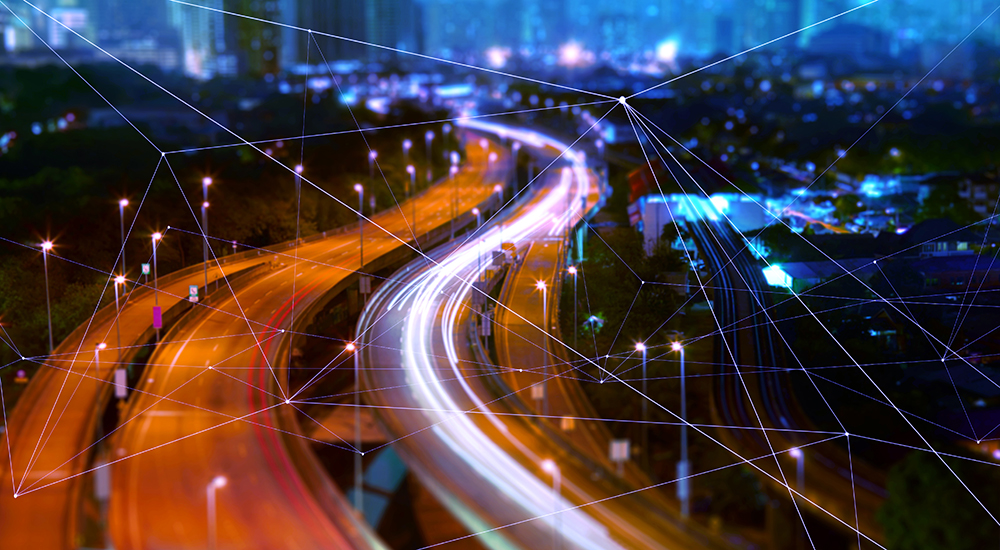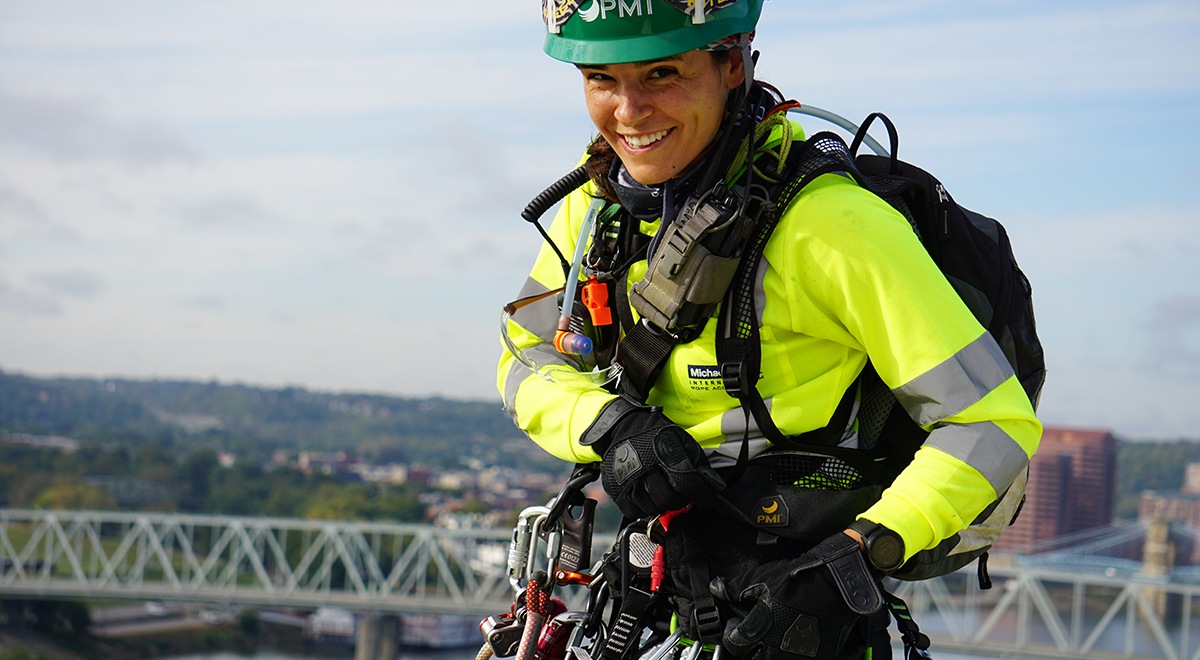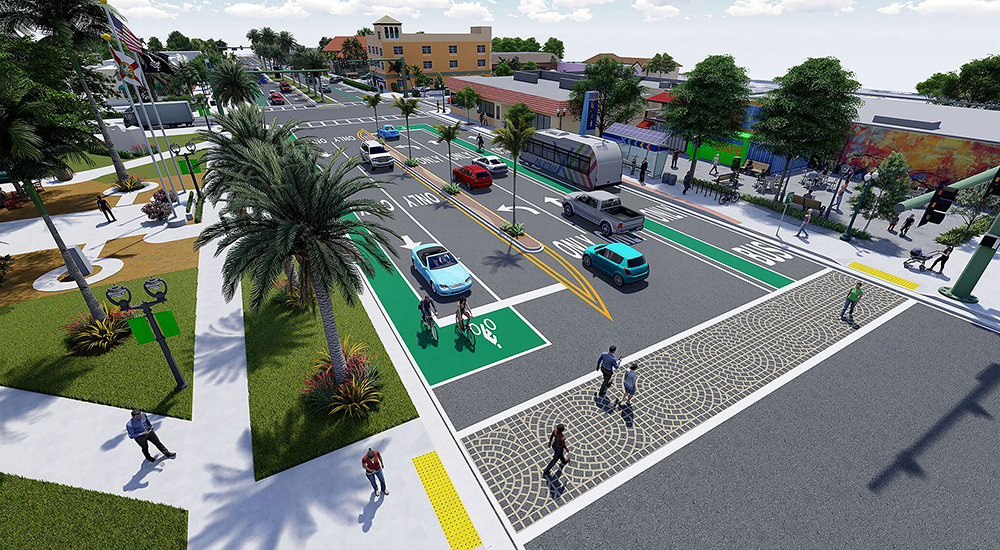Q&A with Malcolm Dougherty, P.E., National Practice Executive
From the 80th Anniversary Edition of Signature
Transportation projects have been core to Michael Baker International for nearly 80 years, shaping our country and connecting our communities. As we continue to look at the future of our industry, Malcolm Dougherty provides insights on the trends and technologies that will shape the road ahead.
COVID-19 has made an impact on every industry. What do you see changing in transportation?
From a Company standpoint, with a few exceptions, the existing work and existing transportation tasks that we’ve been given by our clients are largely uninterrupted. Design continues. Most of the construction work continues. We are fortunate that transportation improvements have been labeled by most states as essential business, and we continue to stay close to our clients as they navigate current and future challenges. Transportation revenues, through gas tax and other streams, however, are on the decline and will have an impact on programs this year, and potentially over the next 18 months. Any economic stimulus package revises this scenario and creates opportunities.
What happens when we are over the hump with this virus? Are people going to be reluctant to go into major public spaces and ride public transit? Are travel patterns going to be different than they were before? Will there be more traffic congestion? Will people want to use shared mobility options to the same levels that they were before? These are all questions that factor into the future of transportation.
We used to consider the future the next five, 10 or 20 years. Now, we need to think about the next 12-18 months too.
This pandemic is forcing us all to try different work alternatives and potentially see the benefits of reduced commute congestion and more balance between personal and work life without a loss in productivity. In some areas, I think it will accelerate the implementation of alternative solutions, which could have a real impact on the transportation system. Let’s say 5-6 percent of work hours were performed from home before this pandemic. As a
result of coronavirus, maybe that number increases to 15 percent of work hours, which would ease the strain on the transportation system without adding capacity. You are relieving traffic without increasing infrastructure. Now, the infrastructure you do need is broadband. People don’t necessarily think of broadband as part of infrastructure, but it is all tied together.
What are the benefits of investing in our country’s transportation infrastructure as part of a coronavirus stimulus package?
Investing in the U.S. transportation infrastructure today will undoubtedly have a massive positive impact on jobs and the economy in the short term. However, the lasting benefit over the next few years and even decades of an expanded transportation system will be even greater than the short-term benefits in terms of mobility of people, reduced traffic congestion, improved access and smoother flow of goods. Ultimately, it will help position our country as a whole for economic competitiveness and long-term growth and success.
What are some of the most significant changes in the transportation industry over the last 80 years?
The dominance of the automobile over the last 80 years can be seen everywhere. As the U.S. shifted into an automobile nation, we designed, built, maintained and bolstered the interstate system to connect our communities from coast to coast. And then, as metropolitan living regained popularity – where living close to work and entertainment was a priority – the concept of shared mobility took a new form. No longer were you limited to trying to take a train or a bus as new options emerged. All you have to do is open up your smartphone and press a button for someone to pick you up exactly where you are and take you to exactly where you want to go – and you never have to worry about parking a car. Now, we look more at mega-regions and determining the most effective way to move people and goods efficiently throughout, utilizing all modes and shared mobility options.
What will “transportation of the future” look like?
We will continue to see an increase in technology-rich, connected and autonomous vehicles. Think of driver-assist features that allow a car to follow the vehicle in front of it, as well as adaptive cruise control and lane-keep systems that assist the driver and will, over time, become primary driving functions.
We will also see completely autonomous, lower-speed shuttles – no driver, no steering wheel – to take you around center cities, college campuses, airport parking lots and industrial parks. These will graduate from demonstrations to full deployments. With the recent pandemic, there is also likely to be new thinking and innovations around travel patterns and the design and materials used in these kinds of vehicles so they support the health, safety and well-being of travelers.
Our infrastructure will continue to become smarter. Some of the work we’re already doing with clients in this area involves adding sensors and intelligent transportation technologies to roads and bridges. The George Washington Bridge in Fort Lee, New Jersey, is an example where we integrated new field devices with an Operations Control Center to manage traffic flow and share real-time information with motorists and operators to maximize travel throughput and improve safety. I also see a future where cars will be able to talk to the traffic signal controllers as drivers approach an intersection and vehicles are informed of signal timing. Much like we have frontal crash avoidance technology in some vehicles today, advanced features will become more common and expanded, such as the ability to stop drivers from running red lights.
Lastly, I think the future will include connected vehicles communicating with smart infrastructure in a way that provides a rich real-time image of the infrastructure itself. If there’s a pothole developing on Main Street, this kind of connected transportation system can improve safety, help owners operate more efficiently and even report conditions such as potholes.
About Malcolm Dougherty, P.E.

 Mr. Dougherty is Senior Vice President and National Practice Executive for Michael Baker International. In this role, he oversees the strategic direction for the company's national practices, including Bridge, Transportation, Planning, Water, Construction Services and Technology.
Mr. Dougherty is Senior Vice President and National Practice Executive for Michael Baker International. In this role, he oversees the strategic direction for the company's national practices, including Bridge, Transportation, Planning, Water, Construction Services and Technology.
Mr. Dougherty brings more than 25 years of transportation industry experience to Michael Baker. For the California Department of Transportation (Caltrans), he held roles of increasing responsibility that culminated in his most recent position as Director. In this role, he was responsible for the maintenance and operations of more than 50,000 lane miles of roadway in the State Highway System and the delivery of an $11.4 billion construction portfolio. He also had overall fiscal responsibility for the Department’s budget of more than $10 billion and 20,000 employees.
Mr. Dougherty holds numerous affiliations and certifications, including: Past Chair of the Transportation Research Board’s (TRB) Executive Committee, Chair of the American Association of State Highway and Transportation Officials (AASHTO) Committee on Construction, Chair of the Toll Bridge Program Oversight Committee. He also is a member of the Board of Directors for the Intelligent Transportation Society (ITS) of America, AASHTO, and the California Public Works. Additionally, he is a member of the American Society of Civil Engineers (ASCE) and the past President of the Western Association of State Highway and Transportation Officials (WASHTO).




